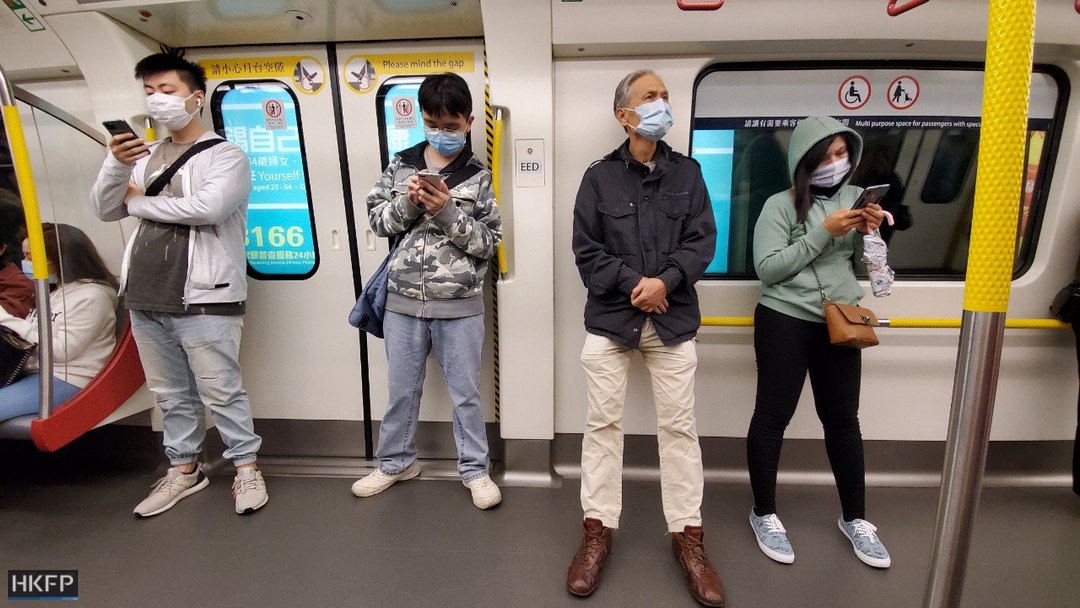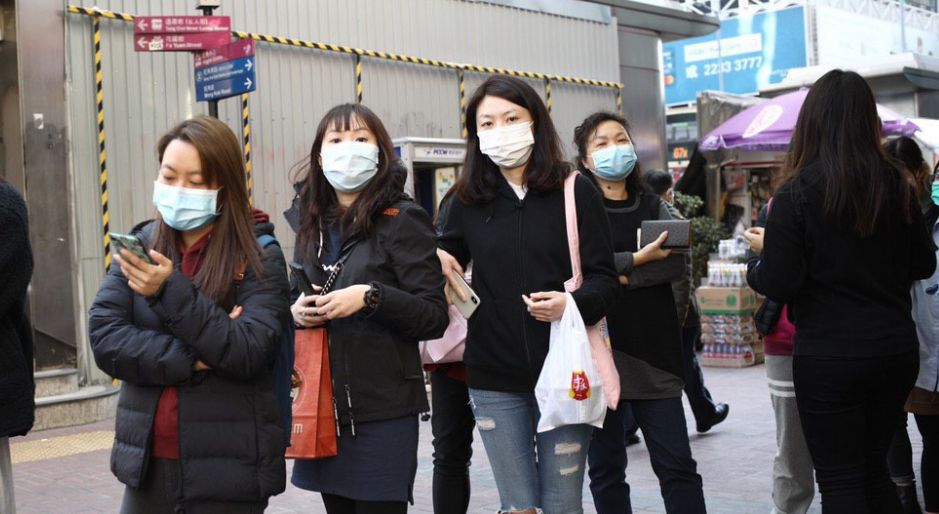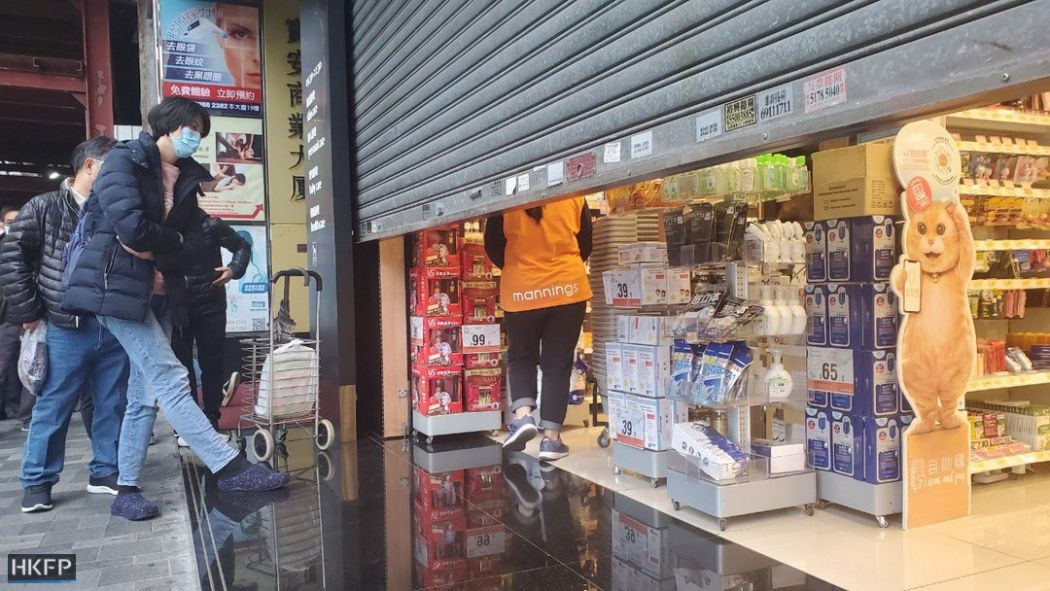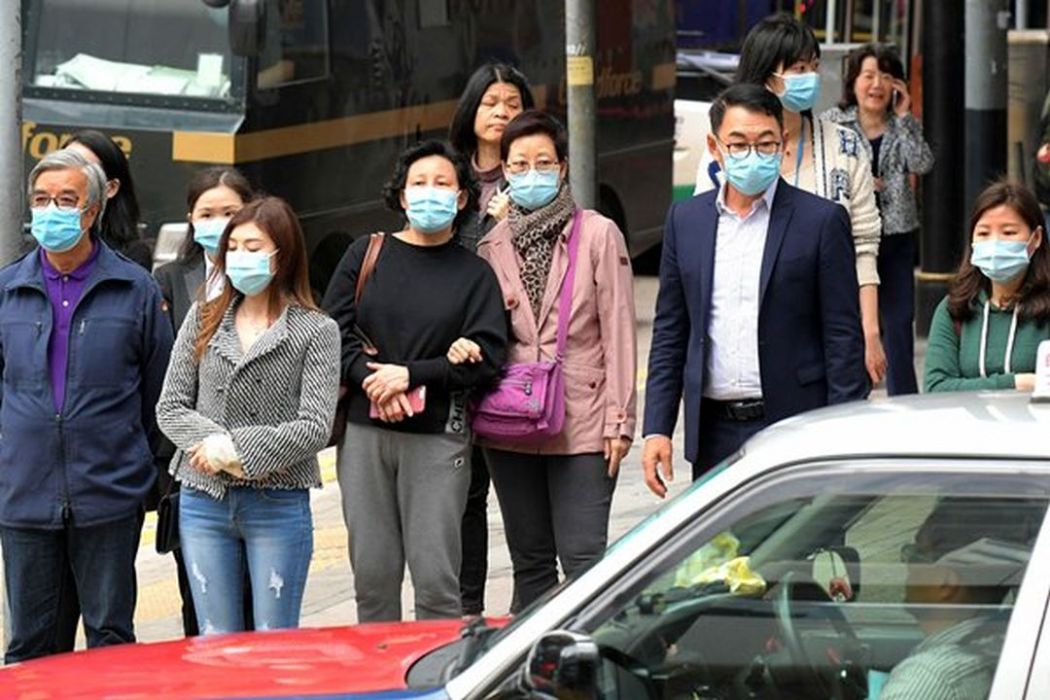Hong Kong is being re-traumatised in 2020 – by another crisis that, like SARS in 2003, is devastating society and financial markets. Similarly, a lack of knowledge and information on the coronavirus outbreak that originated in Wuhan, China have caused wild panic and chaos as well as a global scramble for face masks, from Hong Kong to London and New York. The topic of face masks, the many types available, how they are put on, the ways they are worn incorrectly and dangerously, the stockpiling of masks for inflated secondary sales, the “recycling” of masks for personal use or resale and the conversion of household items like pomelo rinds, feminine hygiene products and plastic water bottles into makeshift face shields are just some of the issues we’ve been re-visiting with the arrival of the new coronavirus, which the World Health Organization recently renamed Covid-19.

In stores and online (if not sold out already) there are face masks of every grade, material, style and variety: masks made from medical-grade paper, decorative paper masks in a rainbow of colors, sleek polyurethane Pitta masks, washable fabric masks and reusable dust and allergy masks. Most of these products provide absolutely no protection against the novel coronavirus or other viruses.
Which masks can offer protection? Surgical face masks and N95 respirators, which filter viruses from the air with up to 95% efficiency; even though viruses are smaller than the filter spaces, they become trapped in the mask layers and by ionically binding to the filter material. But even the best face masks are often worn and disposed of incorrectly, and many of the masks on the market are also counterfeits.
The market in Hong Kong is relatively unregulated, and the advertised claims of many face masks for sale, especially online, are inflated or outright false, yet the allure of protection against terrifying diseases like the coronavirus plays on human fear and opens up wallets. As a result, many people end up buying the wrong mask or wear a good mask incorrectly, with compounded misuse potentially helping spread rather than prevent dangerous respiratory pathogens like Covid-19. Lulled into a false sense of security, a mask-wearing user might enter high-risk areas, expose themselves to more coronavirus dangers and continue on to exponentially infect others.
Common face mask use mistakes
Let’s take a look at some common issues regarding face mask use:
- A mask is worn upside down, only over the nose, not pulled under the chin, or worn only over the mouth, leaving the nose exposed. Even the best mask won’t protect if worn incorrectly.

- A user constantly touching and fiddling with the mask’s filter surface, which cross-contaminates fingers and subsequent surfaces. A contaminated finger will cross-contaminate the next SEVEN surfaces it touches, e.g. phones, ipads, keypads.
- Pulling a face mask under the chin for conversation or eating, and then putting the mask back up again.
- Reusing or recycling masks. This has been a common and dangerous emerging practice in Hong Kong since January 2020.
- Wearing the same mask for too long. The length of time that a face mask could be safely worn depends on the number of people a user has been around. The outer layer of a mask is the ultimate barrier. Like a fishing net, it will filter but also accumulate pathogens, without inactivating or killing them. The longer a mask has been worn around others, the more concentrated the infectious load becomes. A face mask should never be worn longer than a day; a doctor or nurse will go through multiple masks during a single work shift.
- Used masks are not disposed of quickly and appropriately. Used masks have a build-up of potentially infectious particulates that could include coronavirus and other pathogens, and if left around, they can cross-contaminate previously clean areas.
- Using a counterfeit face mask. The gold standard for surgical face masks is ASTM-F2100. But there are many masks that look similar, made of cheap materials that do not meet that standard and do not provide an adequate barrier against disease. Only buy from reputable sellers; face masks made from substandard material abound online.
- Relying on N95 masks. When worn properly, these respirator masks get very hot inside and are very difficult to breathe in due to the pressure change between the air inside and the outside atmosphere. It is like breathing through a blanket and can become distressing to the user. A user’s blood-oxygen saturation can drop and carbon dioxide increases significantly with correct and prolonged use. Even a healthy and fit adult could find wearing an N95, if put on correctly, difficult after an hour or so of use. An older person or an immunocompromised individual likely would have a very hard time using an N95 mask even for a short time. Wearers may take it off for a break which would reduce its protection. Children and infants are also generally not appropriate candidates for wearing N95s as the risk of suffocation is higher.
Face masks to avoid
Let’s now look at other masks that people have been wearing during these desperate and confusing times to avoid Covid-19:
- An inferior mask made of fabric, paper or plastic, or a dust or allergy mask is chosen and worn into a high-risk area.

- A Pitta mask with an “N95 insert.” Pitta masks are made of porous sponge material, with no filter throughout the mask except for the small circle valve insert.
- Homemade masks and face shields crafted from fruit, raincoats, women’s underwear, cardboard boxes, plastic bottles and other household items. These offer no protection against the coronavirus and confer only a false sense of safety for the desperate.
Recently, the South China Morning Post, citing research by the University of Hong Kong, published a do-it-yourself guide for making face masks at home using paper towels and tape. The article claims these home-made masks can confer 80-90% of the protection of manufactured face masks. In fact, this is an extremely unsafe practice, and irresponsible public guidance.
In addition to the barrage of filtration, bacterial, droplet, pressure, splash and flammability testing that a proper surgical face mask must undergo to secure its U.S. Food and Drug Administration (FDA), American Society of Testing Materials (ASTM) or International Organization for Standardization (ISO) classification and approval, it must be emphasized that NO COMPONENT of a medical-grade surgical mask is made of paper. Surgical masks are composed of three to four layers — including spun-bond or meltblown polypropylene (the filter layer), a high-density non-woven layer of polypropylene cellulose/polyester, and layer(s) of melt-blown polypropylene filter material toward the face side.
If you don’t have an authentic face mask, it’s best to keep a safe distance from others, socially isolate yourself and practice good hand hygiene until we have a better understanding of Covid-19.
According to the World Health Organization, wearing medical masks when not appropriate not only causes unnecessary costs but can cause users to feel a false sense of security. Habits such as diligent hand-washing and not touching your face likely provide better protection against the coronavirus. However, Hong Kong has one of the world’s highest population densities per square kilometer. It is almost impossible to avoid crowded places, to stand at least 2 to 3 meters from anyone, let alone manage to avoid a close-contact cough or a sneeze. The best option is to stay home. Not much fun, is it?
How to choose a good mask
Against these warnings, if you are still adamant about wearing a face mask, what type should you choose? Debates — both social and academic — rage online about the usefulness of surgical face masks during outbreaks of respiratory pathogens like the coronavirus. However, proper surgical or N95 mask use in conjunction with diligent hand-washing have been shown to reduce the spread of respiratory illness.

Although surgical face masks and respirators have been studied for decades, in hospitals, under surgical conditions and in pandemics, questions abound regarding their actual usefulness. A systematic review of the research literature, such as the Journal of the American Medical Association, shows that properly worn surgical face masks and N95 respirators are equivalent to each other. However, given the real-life user difficulties with N95 respirator masks, the most practical for consumer use would be an ASTM-F2100 surgical facemask.
Quality masks that offer trusted protection are approved and verified by international regulatory bodies (such as ASTM, FDA or NIOSH) and will have respective certification codes on the packaging. To guard against fake masks, buyers would be well-advised to search for reputable sellers offering trusted brands such as Kimberly Clark or 3M.
More recently, companies have begun offering surgical and N95 masks with novel antiviral and antimicrobial inclusions embedded into the normal filter layers. Such a face mask was developed by a small Hong Kong company called Filligent Limited, and in 2012 it was awarded a U.S. FDA “First of Kind, First in Class” approval. (Full disclosure: I was the Research and Development Director responsible for Filligent’s FDA approval for this mask, but I have no current or ongoing financial interest in, or employment relationship with, the companies that now own the right to produce and sell it.)

This antiviral surgical face mask was equivalent in all ways to a normal ASTM-F2100 surgical face mask used by hospitals and medical practitioners. Because the outer layer is hydrophilic, it absorbs sneezes and coughed droplets, and the compounds in the outer layer could inactivate a variety of respiratory viruses. The mask was tested against 15-plus strains of influenza type A and type B as well as swine, equine and avian influenza, all with 99.99% inactivation. They also worked to inactivate other respiratory and other common bacterial pathogens.
These masks, called the BioMask, can be worn for longer periods compared with standard surgical face masks. The issue of cross-contamination that can happen with surgical face masks is eliminated due to the antiviral compounds in the outer layer. The masks, which have been co-branded with CURAD and Medline, as well as Target’s “Up & Up” house brand, are available at CVS, Walgreens and Target in North America. However, supply for these antiviral masks as well as regular surgical face masks has been scarce since December 2019.
The right way to wear a surgical face mask
The first step is examining the mask. If it is damaged, throw it away.
If the mask looks okay, pull the loop around the ears, expand the mask over the nose and chin and make sure it has a snug fit. Do not touch the surface of the mask when putting it on, while wearing it, or when taking it off.
Replace the mask if it is soiled with bodily fluids, either on the inside (by the wearer) or outside (through public exposure). But in general, surgical masks are single use items and should never be recycled or reused. Remove the mask only by touching the ear loops to avoid cross-contaminating fingers. Wrap and dispose of mask properly, and wash your hands.

What are we learning from all this?
The shortage of face masks in Hong Kong is a disgrace. In the aftermath of the SARS crisis in 2003, the Hong Kong government should have appropriated funds for contagion situations like the coronavirus and stockpiled sufficient face masks and other professional PPE (personal protection equipment) to protect public health workers and others at the coalface, such as medical practitioners, hospital employees, airport staff and sanitation workers.
Which leaves us asking: What more can you do to protect yourself and your loved ones from Covid-19, aside from becoming better educated on how to choose, wear and dispose of face masks properly? As the WHO points out, face masks alone are not enough to protect against the coronavirus.
Make sure to also wash your hands frequently with soap and water. This is superior to any kind of antimicrobial hand-gel as it completely banishes pathogens from your hands — your most active body part — simply by washing germs away. Use alcohol-based hand gel when soap and water are not available. Be sure to use a coin-sized amount of gel, and cover your hands and fingertips liberally.

Practice social distancing. In this era of social media, Skype and Zoom, there should only be special circumstances for in-person meetings at this critical time. Leave your shoes outside of your home. Frequently cleanse high traffic items that get touched a lot, such as door handles and elevator buttons, with diluted bleach or 70% alcohol gel. Avoid elevators and take the stairs!
Infectious disease experts agree that contagious outbreaks are going to become increasingly common as humans continue to encroach on natural ecosystems. Global populations are set to grow by another billion people in the next decade, so Ebola, SARS, MERS, Marburg and Covid-19 simply mark the emergence of a menagerie of new chimeric zoonotic viruses. It’s ignorant to assume that whatever disease is coming next won’t affect us similarly. They’re coming, it’s just a matter of when and how we can intelligently protect ourselves.
This article first appeared on Forkast.News. Dr. Ariane Davison is a Hong Kong-based viral immunologist and director of Global Health Care Consultants. She has comprehensive experience in the global healthcare, biotech, start-up, consulting and equities industries, with senior roles in Hong Kong, China and the U.S. in advisory and asset management. Among other achievements, in 2011 she led a research team that secured a “First in Class” U.S. Food and Drug Administration medical device approval for an ASTM antimicrobial and antiviral face mask. Davison earned her Ph.D. in medicine from the University of Sydney and has published in journals and textbooks.
